Has the word “immersive” been compromised?
Wobbly projection mapping and pop-up attractions have caught the public’s attention, but do they truly represent what the immersive industry has to offer?
As a few WXO Members recently said…
“The word immersive is being devalued by lazy projections shows and brand activations that are as immersive as… a zoom call. These people will kill this sector and they are our enemies.”
“‘Immersive’ has become – and thus is – meaningless.”
“If you call everything a banana, you’ll see bananas everywhere.”
Are we already facing ‘immersive-washing,’ or is this just a temporary craze? Or is there another way…?
Ana Brzezinska is a Polish-French-American curator and producer specialising in digital and emerging formats, with a focus on AR/MR/VR technologies. She works as an Expert Adviser in innovation, culture and media with the European Commission, and used to be Head of Studio at the VR start-up Kaleidoscope on projects including Digital Catapult’s first Immersive Arcade and one of the first digital fashion shows with London Innovation Fashion Agency.
Brzezinska is also Immersive Curator for Tribeca Festival and was responsible for delivering Tribeca Immersive 2024, an in-competition section for spatial and digital storytelling considered one of the most prestigious in the world. Tribeca has been showcasing immersive work for 13 years, and was one of the first institutions to do so – according to Forbes, “Tribeca is XR’s most important festival”.
Her experience in watching and participating in the growth of the immersive industry has left her pondering one key question: how do we make sure our discipline, as complex and ambiguous as it is, becomes a standalone industry and gets recognition as being a proper art form? As she embarks on a PhD on the topic, Brzezinska has gathered her learnings and observations from Tribeca and beyond to start moving towards the answer.
In this report you’ll discover how we might evolve immersive media from an emerging field into a recognised creative discipline, independent of traditional arts and media sectors. She’ll discuss audience development and its role in shaping the future of immersive experiences, the challenges of designing for large-scale, open immersive venues, and the fostering of new creative formats like spatial sound.
Tribeca Immersive 2024: Constructing A Historical Show
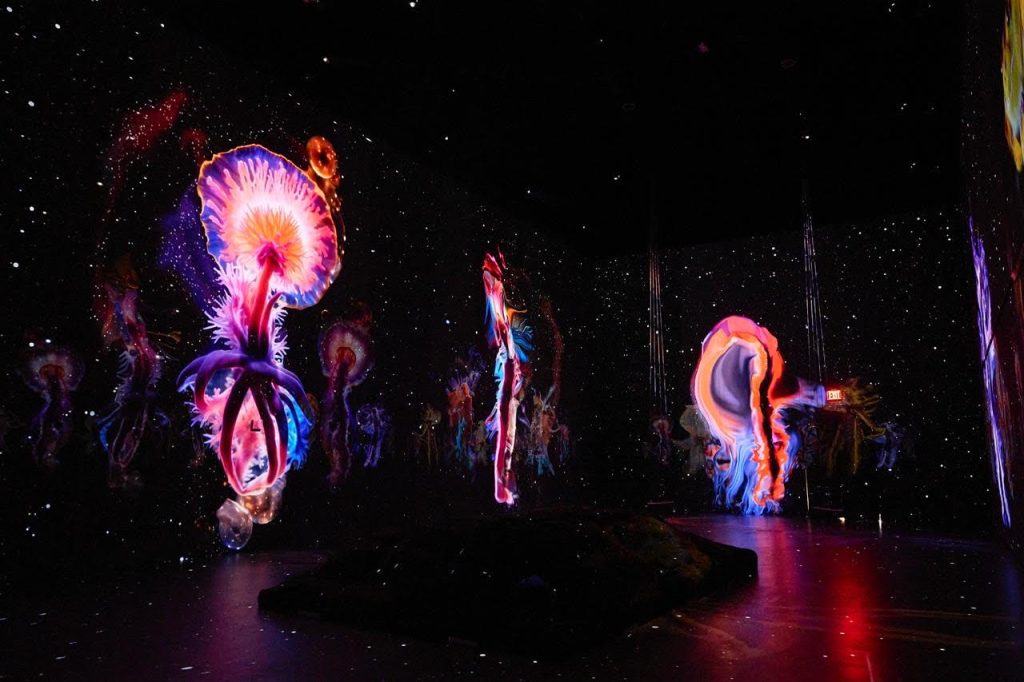
Tribeca Immersive had been running as an independent show for 13 years, but in 2024 Brzezinska and her team were given an incredible opportunity to work with New York’s brand new immersive venue, Mercer Labs, to commission original works. The venue is a three-storey building with fantastic technology, and Tribeca was tasked with curating digital art of all shapes and sizes for 15 rooms across two floors.
The exhibition consisted of eight original large-scale works created especially for Tribeca Festival by six globally-exhibited digital artists coming from film, VR/AR, AI, sculpture, architecture, dance, and music: Memo Akten, Katie Peyton Hofstadter, Wen-Yee Hsieh, ScanLAB Projects, Robertina Šebjanič, Liam Young, and Sutu. There was also an emphasis on young and emerging talent coming from the independent art scene through The Circle, a collaborative development program designed to support top digital talent.
Visitors travelled through various spaces equipped with different technologies in a convergence of physical architecture and digital technology: a magnificent central space, a room with an oculus that “looks” at you as you enter, an infinity room with LED technology, and an audio-only space using sound as a holographic object.
Brzezinska saw it as an opportunity to play with different types of immersive technology to augment the audience journey, with the programming broken into chapters that were rotated daily to offer a different experience. This was also a marked departure from previous editions of Tribeca Immersive in Spring Studios, which were much smaller in scale and where the user journey was a little more isolated.
“At Mercer Labs, the beauty of the experience is that people were able to experience the works together.” Ana Brzezinska
The initial show was only meant to last 10 days, but was extended to seven weeks due to selling out. The overall attendance was over 50,000 viewers, an average of 1,200 visitors per day, with a mix of locals, tourists, and industry. Visitors were allowed to spend as much time with each artwork as they wanted, with the pieces displayed on a loop, and far exceeded Brzezinska’s expectations of how long they would linger, staying for 3-4 loops on average.
The Immersive Renaissance: Cultural Shift
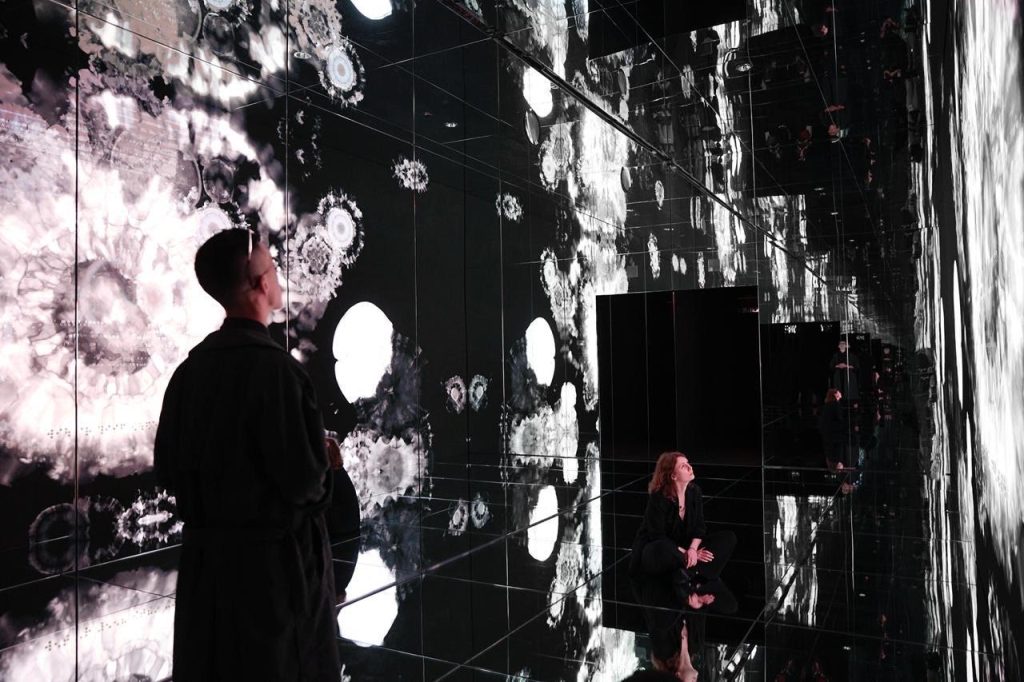
Tribeca Immersive 2024 was clearly a seminal moment for immersive art, placing independent creators in a commercial venue with great success. Brzezinska is now trying to understand the reasons for this success – and what they might mean as we evolve the immersive arts as a standalone discipline. Are we entering the Immersive Renaissance?
There’s clearly a broader shift towards experiencing culture through an immersive lens, with brands, museums, and performing arts centres all clamouring to understand how they might interact in the space. Brzezinska puts this increased interest down to three main factors:
- There’s a massive cultural shift in how people expect to consume cultural offerings and content. There’s a need to meet your public where they are, bringing the fruits of the arts onto the streets and into public spaces, instead of counting that they will come to an institution that might be intimidating for them. This is a subtle and complex phenomenon, and it’s happening across the board: see the Paris Olympics Opening Ceremony, or the public art commissions for the new JFK terminal.
- There’s a post-pandemic need to be together in a casual way. We’re prioritising openness and don’t want to feel isolated.
- As the overall reputation of the industry increases, there’s more social approval of the immersive arts. For a long time, this was an under-appreciated discipline – but the launch of brands like MSG Sphere and Apple VisionPro, with all their marketing power, suggests that there’s something fresh, interesting, press-worthy, and even sexy that’s deserving of your attention.
The Immersive Renaissance: Technological Growth
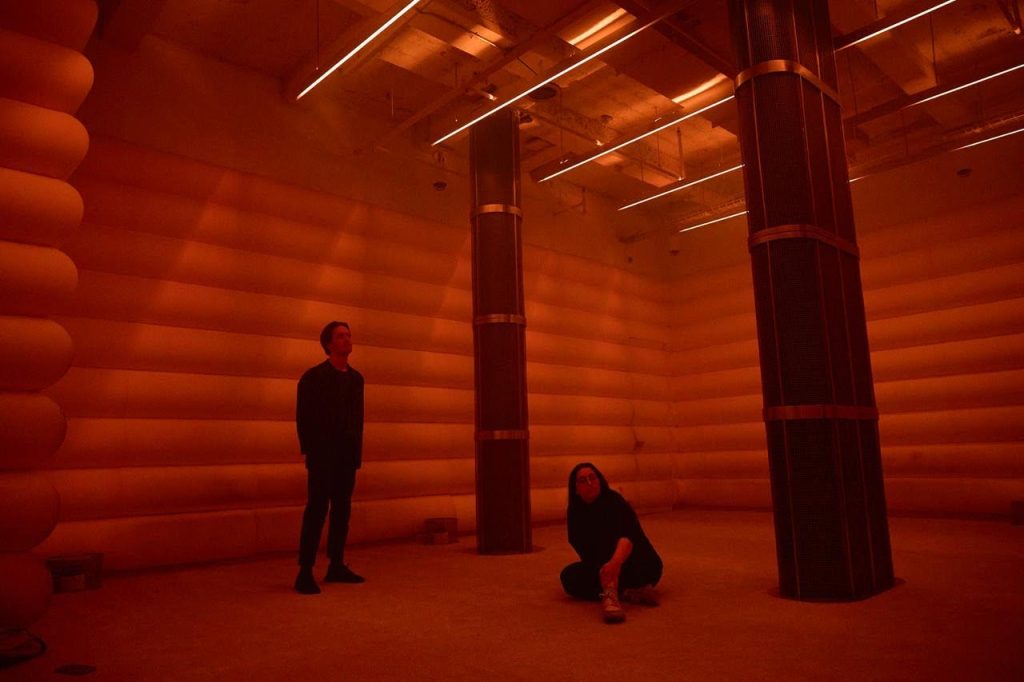
And from a VR/AR/XR industry perspective, we’ve also learned so much in the past decade that’s making this renaissance possible, spanning:
- Spatial storytelling techniques
- User-centric approach
- Interactivity and playfulness
- New financing and distribution models, which we need to embrace to grow businesses
- Passion for innovation, based on a cycle of prototyping, failing, and correcting
The 3 Pillars Of Immersive As A Standalone Industry
When we talk about how to build a sustainable future for the immersive sector, we often first hear about business models and funding. And while these are of course important, Brzezinska believes that in the long-term, there are three pillars that require more of our attention and might lead us to answers about which business models are fit for purpose.
1. Immersive Audience
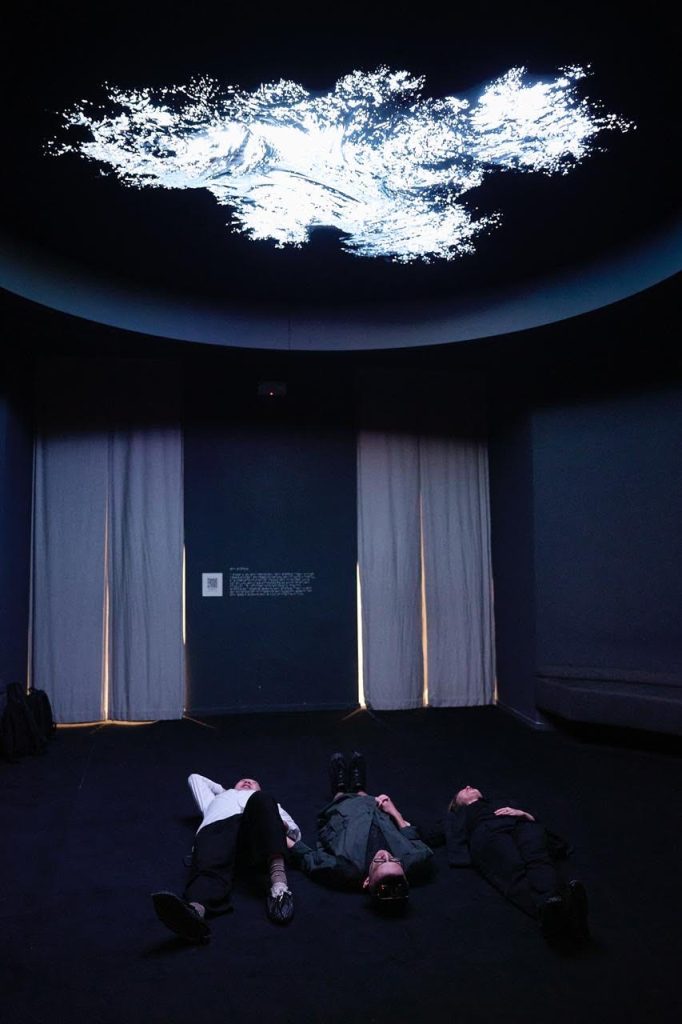
We don’t know enough about the audiences for immersive work. At Mercer Labs, Brzezinska observed how hundreds of people went through the experience and stayed for longer than anticipated. This was rewarding, but also posed the question: who are these people paying $52 for an immersive experience? What might shape who comes to these spaces?
A key factor is that immersive venues tend to be more open and accessible, and less intimidating, than traditional arts venues. They don’t expect their audiences to come prepared with a level of cultural knowledge. However, this doesn’t mean that you don’t need to put effort into what you deliver. When you’re serving a wide range of backgrounds, social classes, and understanding of technology, you need to be even more detail-oriented to deliver a better experience, and embrace the challenge of telling a story without needing an art history background or an understanding of curatorial language for it to resonate. This is the democratisation of art, and it’s exciting.
“I’d never seen a public like this. You don’t get it in high-end European venues, because they don’t feel they belong there. Commercial venues shouldn’t be afraid of independent artists, and elite industry shouldn’t underestimate working-class audiences.” Ana Brzezinska
Why people choose us against someone else means understanding the state of society: what are their needs? What are the gaps in their lives? If audiences are drawn to immersive experiences not only because of the works but also because of how they feel in the space, the impact will probably be much deeper than anything else they see. This is both an opportunity and a responsibility.
2. Immersive Everywhere
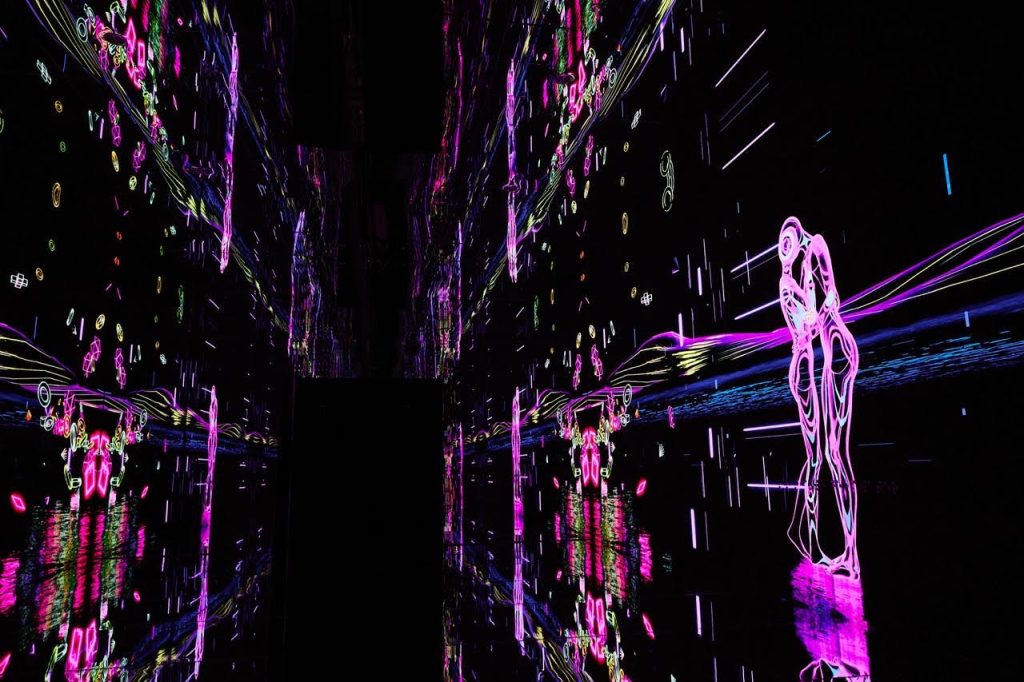
We all know that everything is “immersive” right now, from an exhibition like Tribeca down to a website. New creative formats are emerging as the industry matures, creating a massive wave of experiences that are being offered to audiences – an immersive experience might use LED, kinetic, audio, live performance, thematic or branded content, or a combination of all of the above.
Van Gogh-style projection mapping shows have done a great job of educating the first wave of immersive adopters, and audiences wouldn’t now have higher expectations without having gone through this. However, we’re now well beyond this initial “Van Gogh phase”.
In order to distinguish real immersive storytelling from incidental hype, we need to start analysing why certain formats and experiences are successful. Why do some work so well? Why do people stay longer in certain experiences?
Once we have the answers, we can create systemic solutions to support creators and studios to develop new ideas for more elaborate experiences. Measurement, scientific rigour and testing, anecdotal evidence and audience feedback all have a part to play in this.
3. Immersive Language
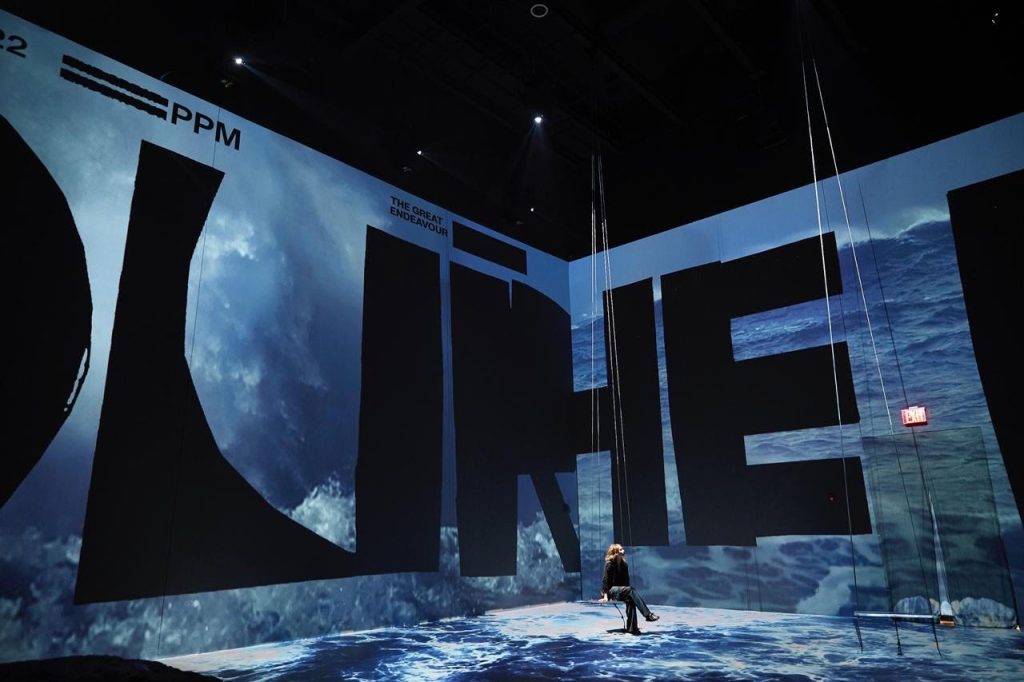
Each creative discipline (fine arts, film, music, theatre, dance, photography) has its history: a canon, terminology, and points of reference. But so far, the immersive industry doesn’t. History is based on what we tell each other, and the only memory we have lies in what makers and audience exchange.
Without history, we don’t have the tools to properly analyse immersive experiences, or pass on our learnings to the next generation of makers. The language we do have is overused, and the terminology is inconsistent: different segments of the sector might use the words immersive, spatial, extended, expanded, 3D/4D, or something else to describe what they do. They might present their work as an exhibition, show, showcase, selection, or experience. Meanwhile, hype cycles see trends burn out and die almost as soon as they’ve started: see the metaverse, crypto, and maybe the future of AI.
People also sometimes find it hard to describe what they’ve experienced, as they don’t have the language. This is both a challenge and potentially an opportunity for the creators and commissioners of immersive work: how do we describe and present the work? How do we market an immersive experience without repeating the same slogans? And how do we make technology not the first thing we mention, but instead the story, aesthetics, look and feel?
If the immersive arts are to be taken seriously as a standalone industry, we need to ask ourselves what we want to communicate, and how we want to be remembered.
The WXO Take-Out
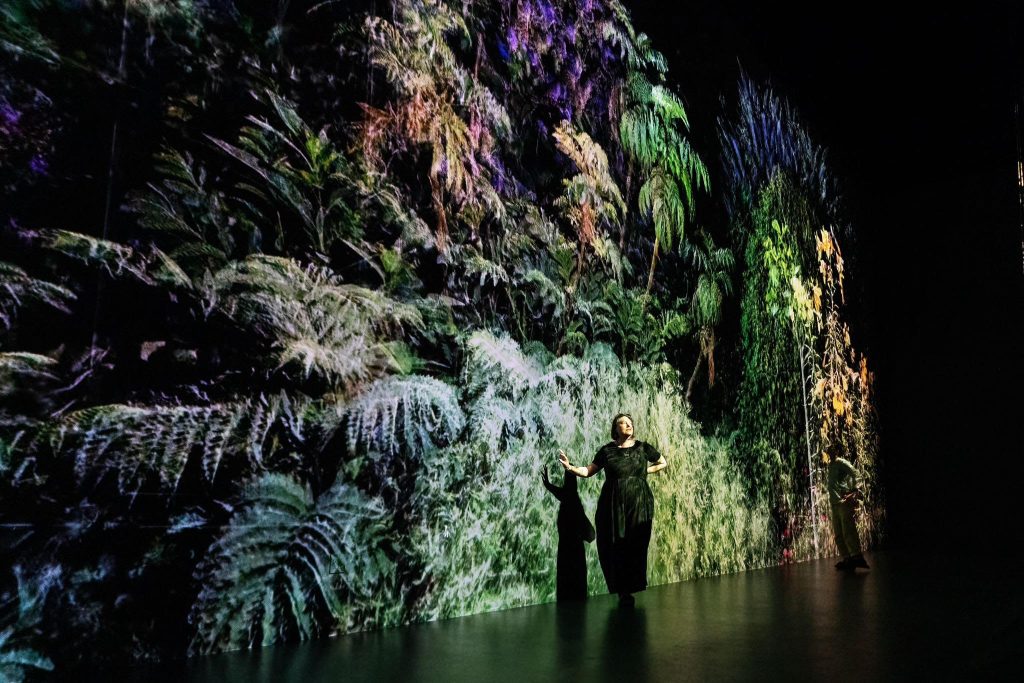
We believe that Brzezinska’s work in defining, evolving and carving out space for immersive experiences is vitally important as it continues to evolve at a rapid pace.
As WXO Member Louis Alfieri says, there are certain art forms that are respected, like theatre or film, and others that aren’t, like theme parks. Defining a shared language and history, analysing which experiments and formats work and which don’t, and passing on what we learn to the next generation of creators will all help claim space for immersive work in the 21st century.
This is work that WXO Members are already passionately engaged in – see our earlier Immersive Firestarter, where pioneers including Stephanie Riggs, Noah Nelson, and Maël Magat all shared their thoughts on the definition of “immersive”. And it’s work that we’ll continue together. Here’s to the immersive renaissance.
So next time you’re designing an experience, ask yourself:
- Who is my audience? Which of their needs is my experience serving?
- What creative formats can help push my work beyond the parameters of selfie art?
- How do I describe and present my work to the world?
Want to come to live Campfires and join fellow expert experience creators from 39+ different countries as we lead the Experience Revolution forward? Find out how to join us here.





